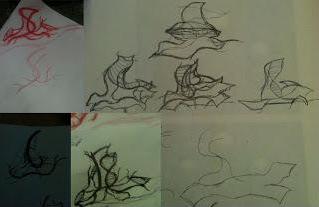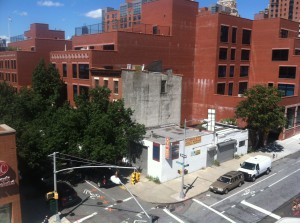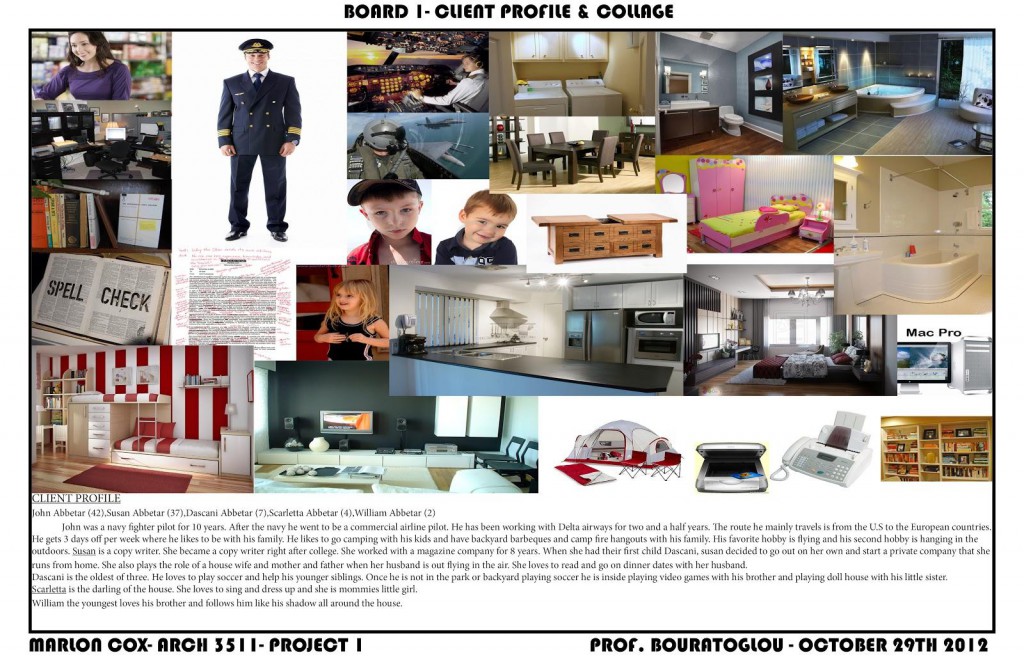Teaching Methodology
In my courses there are only one or two projects that are required of the students. The courses meet twice a week, for three to four hours at a time. During each meeting I try to mix up the course time depending on what is being taught during the class. I also try to reduce any monotony so that students will be engaged and at the edge of their seat.
- I use real world examples from my projects and other relevant projects around the world.
- I enjoy using a variety of different teaching methods, which include: lectures, desk critiques, presentations, pin-ups, small group discussion, project teams, and field trips.
- Each project I connect students to their project using “real” clients and sites.
- I use new technology, especially blogs to connect the students to one another and the outside world.
Real World Examples:
Throughout my lessons I am constantly referring to my projects and other current and historical buildings. Architecture is a very visual course of study. Images remain with the students when they begin to work on their projects. They take these examples and start to visualize their own projects, reworking ideas that they have seen, and getting intrigued with how they could develop these materials or forms into their design. They spend time researching other examples and formulating their own projects. Images are very important when used to inspire the students when they begin their designs. When I can relate my own projects through images and stories to the students, my knowledge is validated. The students understand that I am a practicing Architect with the research and knowledge behind my lessons.
Variety of Teaching Methods:
I am privileged to see my students for a substantial amount of time each week. I know them all by name and know how to engage them through my lessons. The first meeting of each semester is an “icebreaker” so that I can understand my students and the dynamics of the class. Each semester, the classes are quite different from the previous semester. I tailor each lesson to the dynamics of the class. Some lessons are better taught through images in a powerpoint lecture, while other lessons work better with certain students in small groups. I am very clear about deadlines and requirements, but constantly change the method in which I disseminate the information. This keeps both me and my students sharp and enthused. It also encourages excellent attendance. I have few absences throughout the semester. I bring in materials for the students to touch and see, along with taking the students to actual sites which they will use for their design project.
“Real Clients”:
One of my favorite classes is the first class of Design V. The project for the beginning of the semester is designing a single family house using shipping containers. I do not tell the students that they are using shipping containers, as I first want them to think about who they are designing for – a family. I have created a fun introduction lesson, where the students select three strips of paper. The first two are a variety of different occupations, the third are number of children, extended family, pets… From these three sheets of paper, the students need to develop a list of questions to ask the client what their needs are for their new house. The homework is to create a 11×17 collage using text and images to describe the spatial needs of the family (client). This written description gives the students a actual family that they will be designing a home for. The students really relate to their family. This collage is due at the next meeting and will be presented to the class. This becomes the first board of Project 1. The students have just created their architectural program. I had previously done this assignment a few years ago then I began to teach this course, but had asked the students to create a program. The students created a list of spaces and the required area. They were not engaged and did not feel any ownership to their project.
Blogs – New Technology:
Over the last five years, I have incorporated the use of blogs to my Design VI course. This course has one project over the entire semester. Each student created their own blog on the first day of class and had to post a minimum of twice each week. I assigned each student a online reviewer. This online reviewer is an Architect located throughout the world. Each time the student would post their work, both the online reviewer and myself would receive an email and could review and comment on the post. Blogs are organized chronologically, so that at the end of the semester, the student had a complete document of the process of the project from the first day of class to the final presentation on the last day. The blogs have evolved throughout the semesters, as I have been able to guide students on how to post so that they can receive better comments from both the professor and the online reviewer. I also have the students connected to each others blogs so that they can comment and review each others progress. During the last few semesters, I have been co-teaching this with another Architectural Professor. This has assisted in the process by giving different prospective on the projects along with reworking the course from semester to semester.
Posted by Student
Monday, October 24, 2011
Final concept and development process
 These sketches were expressing my ideas in movement in organic form.
These sketches were expressing my ideas in movement in organic form.
naturally forms an organic feature, like a plant root moving to connect with the soil.
2 comments:
Prof. Bouratoglou October 31, 2011 4:57 AM
These sketches and models are very powerful. You need to work with the larger context of the site and in scale. This concept is ready to transform into a structure. Scale…..
Prof. Bouratoglou
Peter Z November 2, 2011 10:10 AM
Your drawings are very expressive in regards to form. If you were to study the internal and external forces acting on these forms/gestures , it would give you more clues to the nature of their interqaction with your spaces you will be generating. Interestingly enough, even the organs of the body are various shaped forms that operate under one body. Therefore this is an example of multiple functions, one form. This is a reverse idea of multiple forms, one function. Try to define the coordinates or points of impact as moments or coincidences where events occur. Beautiful drawings regardless.
Peter
During the Fall 2012, in my Design V course I have introduced a class blog. This blog facilitated a depository for submitting the various boards required for each projects. I was also able to keep all the assignments, images, reference links and course outline. The students were delighted with the class blog and embraced this new technology.
http://arch3511fall2012.blogspot.com/







